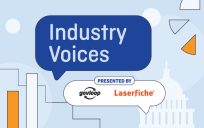Remember the Empath on Star Trek? It was the name of an episode and a character on the original series. It aired in 1968. Empathy was central to the identity of a mind-reading alien. (She was a sort of super-empath who used her powers to absorb the injuries of others by taking them on herself. Tough job. Very draining.) Fortunately, you don’t have to be a mind reader to be an empath for your customer. Empathizing can be learned and practiced, and you may already be more empathetic than you think.
My aim is to get you thinking about empathy in a new way—to heighten your awareness of the state of mind of others. The insight that you’ll gain by doing so can help you get more of what you want in your working and non-working hours.
Most of what I have to say about customer empathy is based on my experience as a corporate sales trainer for a Fortune 500 systems company. Empathy is important in any sales situation. It is impossible to provide a solution if you cannot articulate the customer’s need from their point of view. The more consultative a sale the more that this is true. Now that I’m a government employee, I find myself drawing on my background in private industry to help address the challenges we face in the federal work place. The practice of customer empathy can help.
What is Empathy?
The ability to understand and share the feelings of another, says the New Oxford American Dictionary. Sometimes people ignore the “share” part, but therein lies the power of the idea.
What is Customer Empathy?
It’s a popular buzz-phrase now, but despite its trendiness, the idea behind customer empathy is sound. It provides a framework for the way we understand, communicate with and satisfy our customers and how we measure success.
The Empathy Map
The current enthusiasm for customer empathy can be attributed in part to the “empathy map,” a tool for understanding how the customer perceives, identifies and organizes problems. The mapped terrain is inside the customer’s head. Mapping organizes what the customer is thinking, hearing, feeling, doing, saying, and seeing.
Stand behind your customer. Look over his shoulder.
Empathy mapping is considered “non-linear,” which of course is code for “could get crazy.” But creating a map is a good way to take an imagined glance over your customer’s shoulder, to see the situation as he does, through the filters of his feelings and beliefs.
Customer empathy has become its own industry, complete with “empathy map templates.” Google “customer empathy map template.” You’ll be looking at an alarming number of graphics, charts and drawings, each one a different version of a customer empathy map. Stay calm. (Dave Gray is credited with inventing the empathy map. Among his courses and programs is one that teaches “visual thinking.”) As empathy mapping is taught in workshops across the country, visual expression is encouraged. Sometimes this means a white board of post-it notes with key ideas on them. When you view the ideas in a cluster, associations, links and irrelevancies quickly become apparent. Empathy maps themselves often take the appearance of a human face.
Closer to your customer—standing side by side.
Get into the customer’s head. Tune in to their wavelength. Walk a mile in their moccasins. There are plenty of well-worn phrases to describe one aspect of empathy—imagining what it would be like to be somebody else. When you’re ready to proceed from imagination to action, empathize with your customer on a deeper level by learning what significance they have assigned to the problem you’re solving with them.
In addition to the primary objective, there is an (often hidden) need begging to be met. If you have the right rapport with your customer, and have taken the time to establish trust, they may simply come right out and tell you what it is. “You know, the truth is,” says your trusting customer, “this project is really important to me. I’m looking for another job.” This customer’s assignment is to launch a successful web-based training program. He wants to accomplish this objective not only because it will weigh heavily in his performance appraisal (and after all, it’s his job to do it) but also because the positions he’s targeted on USAJobs and elsewhere require web-based training experience and he needs to acquire some. If you truly co-own the problem with him, you’ll make his job search part of your foreground consciousness.
Once you’ve gotten the personal goals on the table along with the professional ones, you and your customer will stand side-by-side.
Meet the PowerPoint Empath
My friend Amber is known for the dynamite PowerPoint presentations she creates. Her boss is often asked by other managers to spare “just a tiny bit” of her time to provide PowerPoint “advice,” which of course means that Amber ends up doing all the work. Kathleen, a Program Manager, has asked for Amber’s help. Usually, Kathleen’s a cool person, by which I mean that she’s open to new ideas, but not when the heat’s on and she’s stressed out, which is the case right now. It’s ten o’clock. Tomorrow at one, Kathleen will make a presentation to the regional bosses. Her boss is one of them, so the pressure is turned up a notch. Kathleen says she’s not nervous, but beads of anxiety have already emerged on her forehead and are creeping slowly toward her confidence.
Like the Star Trek Empath, Amber will absorb as much of Kathleen’s negative emotion as she can. Along with her tangible, high-quality presentation slides, Amber is valued for her calming effect. Her quiet competence reassures customers like Kathleen that things are under control.
Visualization—through the mind’s eye
Before Amber connects with the technical adviser or media technician at the presentation site, she will have visualized—that is, done a mental walk-through—to identify everything that must be in place when Kathleen rises to address the audience. Amber will ask: Who will advance the slides and by what means? How is the room lighting controlled? Will the lectern be illuminated? Will Kathleen’s PowerPoint slides be combined with those of others in a consolidated deck? What’s the protocol for transitioning between speakers?”
Moving beyond logistics, Amber composes another visualization—she can see Kathleen with one of the PowerPoint slides projected on a screen behind her, appearing calm and collected, and in casual conversation with some of the regional bosses, including her own. In Amber’s vision, Kathleen then returns confidently to her material and resumes her presentation.
Keeping mental images of success in the front of her mind helps Amber make better design and language choices as she continues to develop Kathleen’s slides. By now, Amber is heavily invested in time, energy and pride of authorship. It’s her show, too, not just Kathleen’s.
Amber’s empathy is intuitive. Yours might be too.
Most of Amber’s empathy is employed in subtle ways—she’ll stay out of Kathleen’s way, getting things done without any unnecessary interaction that would distract Kathleen from the top priority—getting her thoughts together in preparation for tomorrow’s show. Kathleen knows herself well enough; for her, the best way to get a grip on the situation (and her anxiety) and gain firm control of those things that she can direct, is to let go of the things she can’t.
What’s the next step? The next audience for this presentation is the deputy assistant commissioner, and Katherine’s boss will want to make the presentation himself. I wonder if he’ll tap Amber to help him revise the presentation, to make it more his own, and to add emphasis to the points that are most important to his strategy.
Your empathy may take you places.
Amber’s empathy has upward mobility and yours might as well. As she is able to provide listening, emotional support and empathy to those in positions of greater influence, her talent for empathizing will heighten her visibility. Empathy and ambition seem to be opposed; there’s a quality of humility inherent in empathy, because it is focused so much on others. If Amber can maintain a humble personal style while serving those with greater power in her organization, she’ll find herself with many career options. The most appealing empaths are modest, but also sure of themselves. A certain level of confidence is necessary to have enough emotional currency to be generous with it. Connecting with another person is satisfying and enhances the empath’s sense of their own value.
How does your empathy grow?
Your talent for empathy can be nurtured. If empathy is a new skill for you, practice it to get grounded. If it is already part of your personality, as it is in Amber’s, empathy can be groomed for growth.
There are times when your agency and organization must feel like an alien planet. I know that mine does. And the empath on Star Trek was on alien ground. Your career as a Star Trek character may remain a fantasy, but you can develop your identity as an empath just the same. Who knows? You might enjoy the role so much that you’ll forget all about asking the crew to beam you back up.
J.T. Kerwin is part of the GovLoop Featured Blogger program, where we feature blog posts by government voices from all across the country (and world!). To see more Featured Blogger posts, click here.






Empathy is such an important characteristic for navigating both personal and work situations. Today, employers look for sharp IQs AND EQs when scouting for potential employees. With customer service, empathy is especially important because knowing your audience’s wants leads to greater customer satisfaction. Great post!
Corinne, thanks for the good words. I think that for good communicators—IQ and EQ—empathy is intuitive. I can’t imagine communicating without it.
The Star Trek reference lured me in but the quality of the blog kept me.
Thanks for posting!
Thank you very much for the very insightful and well written article, J.T. The customer empathy (or lack of) that front line employees display is the image customers have of the companies/federal agencies that the employees represent. But sometimes, even the employees themselves may not truly know who their customers are, especially if they have a job that does not put them directly in contact with customers.
For Federal employees, it could sometimes be even more difficult to see through the haze of laws, regulations, policies, and procedures, with the understanding that the job is to serve not just the immediate boss but also the customers affected by actions taken (or not taken) by their respective agencies.
The customer empathy for the boss may not be in total alignment with empathy for agency-affected customers. But I submit that the customer empathy for both boss and customers should at least be as parallel as possible so that actions agencies undertake (or choose not to undertake) are in the best interests of its customers. In the end, employees who use the customer empathy could just ask, particularly for hard decisions, what does action/inaction do not just for my boss but for the customers my agency serves?
Loved this post – and I would love another one on tips and best practices for developing empathy! I think it would be so useful.